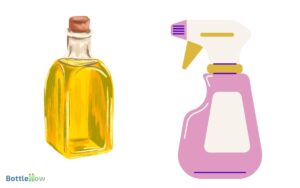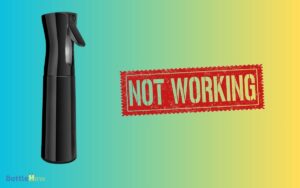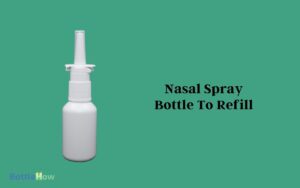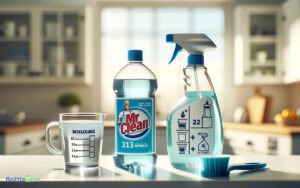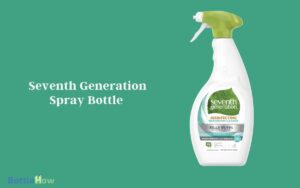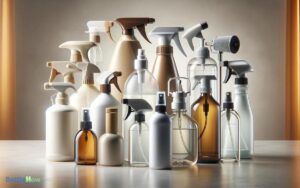DIY Essential Oil Spray Bottles: Explore!
To start making your DIY essential oil spray bottles, choose dark glass bottles like amber or cobalt blue to protect the oils from UV light. Opt for smaller sizes with high-quality spray mechanisms to guarantee a fine mist application.
Always use 100% pure essential oils, and store them in a cool, dark place. For safe dilution, aim for a 1% dilution rate using a suitable carrier oil. This generally means mixing about 15-30 drops of essential oil per 100 ml of water or carrier liquid.
Remember to label each bottle clearly with the blend’s name and the date of creation. You’ll find each spray you create not only customizes your space but enhances your wellness journey significantly.
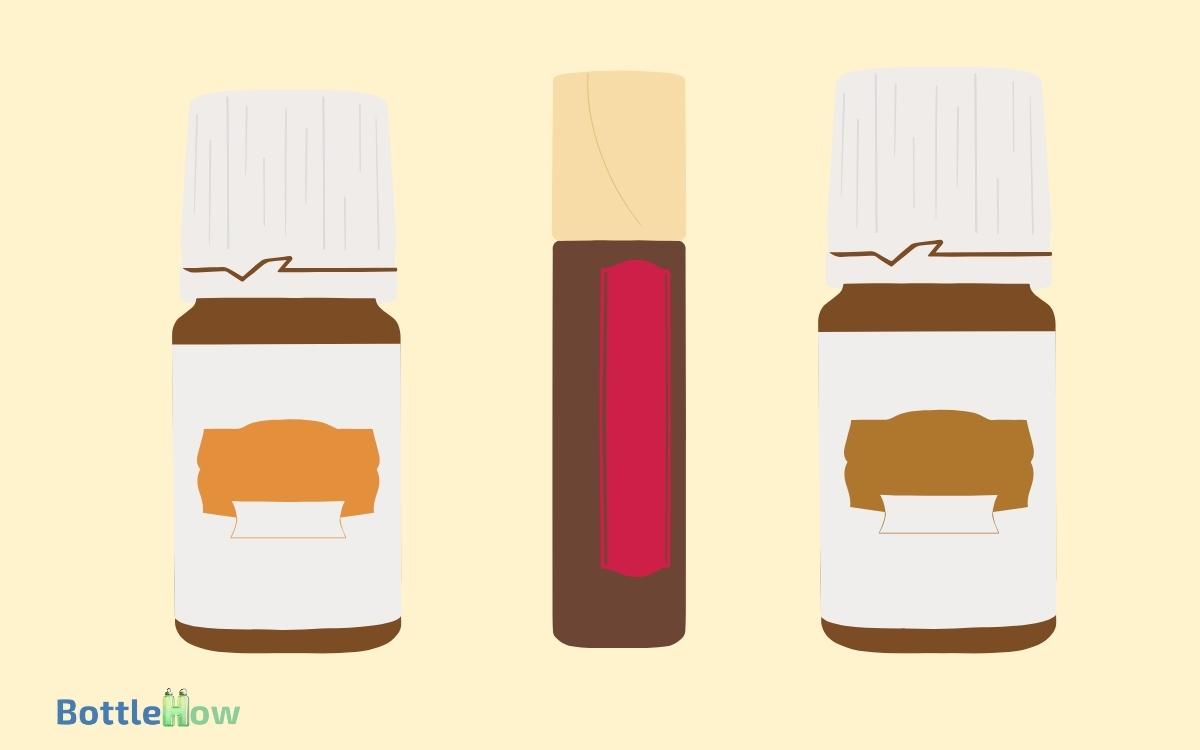
Key Takeaways
Choosing the Right Bottles
Choosing the perfect bottles for your DIY essential oil sprays is crucial, as the material and design can greatly influence the longevity and effectiveness of your oils.
You’ll want to opt for dark glass bottles amber or cobalt blue to protect your oils from UV light deterioration. These materials guarantee your concoctions remain potent and beneficial for as long as possible.
Additionally, consider the bottle size; smaller bottles are easier to handle and minimize waste as essential oils should be used sparingly.
Look for bottles with high-quality spray mechanisms that deliver a fine mist, maximizing coverage while using less oil. This ensures even distribution, preventing excess oil buildup in one spot and enhancing the cooking process. Durable, BPA-free materials are also important for long-term use and safe food preparation. If you’re wondering where to buy spray bottles, check kitchen supply stores, online retailers, or specialty cooking shops for a variety of options.
This thoughtful selection not only enhances your ability to serve others with natural solutions but also respects the integrity of the ingredients you’re using.
Essential Oils Basics
Before starting on your DIY projects, it’s vital to grasp the basics of essential oils, such as their extraction, benefits, and safe usage.
These natural extracts can transform how you care for yourself and others, offering a myriad of health and wellness benefits.
| Aspect | Detail |
|---|---|
| Extraction | Typically obtained via steam distillation or cold pressing. |
| Benefits | Improve mood, boost immunity, and promote relaxation. |
| Usage | Can be inhaled, applied topically, or used in diffusers. |
| Purity | Always opt for 100% pure oils to ensure effectiveness. |
| Storage | Keep in a cool, dark place to maintain potency. |
Understanding these facets helps you create more effective and safe DIY essential oil products.
Safe Oil Dilution Rates
When creating your own essential oil sprays, it’s important you understand how to calculate proper dilution ratios to guarantee safety and effectiveness.
Choosing the right carrier oil, which serves as a base, can enhance the therapeutic properties of your essential oils and aid in their safe application.
Calculating Proper Ratios
To guarantee your essential oil blends are both effective and safe, it’s important to understand and apply the correct dilution ratios. As a rule of thumb, a dilution rate of 1% is generally considered safe for most applications.
This means adding 1 drop of essential oil to about 1 teaspoon of base liquid, be it water or another medium, though specifics can vary based on your needs and the sensitivity of those using the spray.
For a stronger effect, especially in areas needing more potent aromas, you might consider a 2% dilution, which would be 2 drops per teaspoon.
Always keep in mind the needs and possible sensitivities of those who’ll be exposed to your spray. Calculating these ratios carefully ensures everyone can enjoy the benefits safely.
Carrier Oil Selection
Understanding the different properties of carrier oils will help you choose the best one for your essential oil spray, ensuring both safety and effectiveness. Each oil has specific traits that can enhance your blend.
For instance, fractionated coconut oil is a popular choice due to its light texture and long shelf life, making it ideal for skin hydration without feeling greasy.
Jojoba oil, on the other hand, closely mimics the skin’s natural oils, promoting a balanced absorption perfect for face applications.
When diluting essential oils, aim for a safe concentration typically 1-2% of the total volume for topical use.
This means adding 6-12 drops of essential oil per ounce of carrier oil, safeguarding your skin while maintaining therapeutic effects.
Mixing and Matching Scents
Experimenting with various essential oils allows you to create personalized scents that enhance your mood and environment.
Start by understanding the fragrance notes top, middle, and base. Top notes, like lemon or peppermint, are light and invigorating.
They catch your attention first but evaporate quickly. Middle notes, such as lavender or rosemary, act as the heart of the blend, giving it body. Base notes like cedarwood or vanilla, are rich and deep, lingering the longest.
When creating your blend, you’ll want a balance. Typically, combine one part top note, two parts middle note, and one part base note.
This harmony ensures your spray offers an initial burst of fragrance that evolves into a lasting aroma, continually serving to uplift and soothe your spirit.
Adding Natural Preservatives
As you create your DIY essential oil sprays, it’s important to select effective natural preservatives to guarantee your concoctions remain fresh and potent.
Understanding the benefits of these preservatives can help you appreciate their ability to prevent microbial growth and maintain the integrity of the fragrance and therapeutic properties.
We’ll now explore simplified application techniques that can seamlessly integrate these preservatives into your sprays, enhancing their shelf life and efficacy.
Selecting Effective Preservatives
To guarantee your DIY essential oil spray remains effective and safe, it’s vital to select natural preservatives that combat microbial growth without compromising the product’s integrity.
Here are three top choices:
- Grapefruit Seed Extract: Known for its antimicrobial properties, it’s effective against a broad spectrum of bacteria and fungi. It’s also gentle, making it perfect for skin applications.
- Rosemary Extract: Besides its antioxidant properties, rosemary extract helps extend the shelf life of your sprays by preventing oxidation, which is critical in preserving the integrity of the essential oils.
- Vitamin E: Not only does it serve as an antioxidant, but Vitamin E also protects your spray from spoilage by neutralizing free radicals.
Preservative Benefits Overview
Incorporating natural preservatives into your DIY essential oil sprays not only enhances their stability but also guarantees their safety and efficacy over time.
Using natural preservatives helps you serve others by ensuring the products you share are both effective and gentle.
These ingredients prevent the growth of microbes, which can spoil your spray and potentially harm the skin.
Here’s a quick overview of some popular natural preservatives:
| Preservative | Benefit |
|---|---|
| Grapefruit Seed Extract | Extends shelf life |
| Rosemary Extract | Antioxidant properties |
| Vitamin E | Supports skin health |
Each of these options not only preserves your creations but also adds its own unique benefits, making your sprays a safe and nourishing gift for anyone.
Application Techniques Simplified
Adding natural preservatives to your DIY essential oil sprays is simpler than you might think, and it starts with grasping a few key techniques.
Here’s how you can guarantee your creations stay fresh and effective:
- Choose the Right Preservative: Opt for natural options like grapefruit seed extract or rosemary extract, which can enhance the shelf life without compromising the therapeutic qualities of your essential oils.
- Measure Correctly: For every 100ml of spray, use about 0.5% of your chosen preservative. This guarantees efficacy without overwhelming the natural scent and properties of the oils.
- Mix Thoroughly: Ensure the preservative is evenly distributed throughout the mixture. This uniformity helps prevent microbial growth, keeping your spray safe and effective for longer.
Steps for Assembling
Begin by selecting the right size and type of spray bottle that best suits your essential oil blend. Opt for glass over plastic to preserve the integrity of the oils, which can degrade some plastics over time.
Make sure the spray mechanism is compatible with oil; some sprayers may clog if the oil concentration is too high.
Next, clean your bottle thoroughly with soapy water, rinse it well, and let it dry completely to avoid any contamination. Once dry, add your essential oils first.
For every 100 ml of water or carrier liquid, use about 15-30 drops of oil, depending on the desired strength. Carefully pour in your carrier liquid, secure the spray top, and shake gently to mix the oils evenly.
Customizing for Different Uses
You can tailor your DIY essential oil spray for various applications by adjusting the blend and concentration according to your specific needs.
By customizing your sprays, you’re not only creating a product that suits your personal or family’s preferences but also one that can serve others effectively.
Here are three ways to customize:
- Relaxation Sprays: Use a blend of lavender and chamomile oils. This mix helps soothe and calm the mind, perfect for bedtime routines or stress relief.
- Energizing Mists: Combine citrus oils like lemon and orange with a hint of peppermint to invigorate and uplift spirits during the day.
- Cleaning Solutions: Create a potent antimicrobial spray with tea tree, eucalyptus, and lemon oils for household cleaning tasks.
Labeling Your Spray Bottles
After customizing your essential oil sprays, it’s essential to label each bottle clearly to make certain you always reach for the right one. Opt for waterproof labels as they’ll resist moisture from handling and condensation.
Write the name of the blend, the date you made it, and the main benefits or uses. This practice not only helps you identify them quickly but also guarantees safety and efficacy, especially when you’re sharing these creations with clients or loved ones.
Use a clear, easy-to-read font and consider color-coding for different categories like relaxation, energy, or cleaning.
Remember, your labels aren’t just functional; they also convey the care and thought you’ve put into each blend, enhancing the overall experience for the user.
Cleaning and Maintenance Tips
To guarantee your essential oil spray bottles remain effective and clean, regularly wash them with warm, soapy water and let them air dry completely before refilling.
Here are a few more detailed steps to help maintain their condition:
- Disassemble the Parts: Carefully take apart the spray nozzle and tube. This allows you to clean each component thoroughly, preventing any buildup or residue.
- Use a Cleaning Brush: Employ a small brush or a pipe cleaner to scrub the inside of the nozzle and the tube. This ensures that all oil residue is removed, especially from hard-to-reach areas.
- Rinse with Vinegar: Occasionally, rinse the bottles with a solution of water and vinegar to dissolve any oil remnants, then rinse with plain water before drying.
Troubleshooting Common Issues
When you encounter a clogged spray nozzle, it’s often due to residue build-up from the essential oils, which can obstruct the spraying mechanism.
To fix leaks in your spray bottle, make sure the seal is tight and check for any cracks or wear in the bottle itself.
Addressing these issues promptly can help maintain the effectiveness and longevity of your DIY essential oil spray bottles.
Resolving Spray Nozzle Clogs
If your essential oil spray bottle stops working properly, the nozzle may be clogged, a common issue that can usually be resolved with simple cleaning techniques.
Here’s how you can clear it up:
- Disassemble and Soak: Start by unscrewing the spray top from the bottle and remove the nozzle. Soak these parts in warm water mixed with a bit of mild soap for about 10 minutes. This helps loosen any oil residue.
- Rinse and Dry: After soaking, rinse the nozzle and spray top thoroughly under running water. Make sure all soap is washed away. Shake off excess water and let them air dry completely.
- Reassemble and Test: Once dry, reattach the nozzle and spray top to your bottle. Test the spray to see if it’s working smoothly again.
Fixing Leak Problems
Have you noticed your essential oil spray bottle leaking, even when it’s tightly closed? This common issue can be frustrating, but don’t worry; you’re not alone, and it’s often fixable with a few simple steps.
Here’s a quick guide to help you troubleshoot and resolve leak problems in your essential oil spray bottles.
| Problem | Likely Cause | Solution |
|---|---|---|
| Loose nozzle | Improper fitting | Tighten or replace the nozzle |
| Cracked bottle | Damage from falls or pressure | Replace the bottle |
| Worn seal | Overuse or degradation | Replace the seal or entire lid |
Ideas for Themed Blends
One can create a variety of themed essential oil blends to enhance any mood or setting, utilizing specific combinations tailored to achieve desired effects.
By selecting the right oils, you’re not only crafting a scent but also fostering an environment that can uplift, calm, or invigorate those around you.
Here are a few ideas to get you started:
- Relaxation Blend: Combine lavender, chamomile, and sandalwood to create a soothing atmosphere that encourages relaxation and stress relief.
- Energy Boost Blend: Mix peppermint, eucalyptus, and lemon for an invigorating spray that can energize and awaken your senses.
- Focus Blend: Use rosemary, frankincense, and bergamot to enhance concentration and mental clarity during study or work sessions.
Benefits of Using Natural Fragrances
While exploring themed essential oil blends, it’s important to ponder the benefits of using natural fragrances in your daily life.
These scents, derived directly from nature’s palette, aren’t just pleasing to the nose; they also offer profound wellness benefits.
By incorporating them into your routine, you’re choosing a path that aligns with health and harmony, avoiding synthetic chemicals that can be harsh on your body and the environment.
Using natural fragrances can enhance your mental clarity and emotional balance. They can soothe nerves, uplift spirits, and even promote better sleep.
Additionally, by choosing natural options, you’re supporting sustainable practices that respect and preserve ecological balance, making a positive impact beyond personal benefit. It’s a holistic approach that nurtures both individual and global well-being.
Conclusion
Now that you’ve dipped your toes into the fragrant waters of DIY essential oil spray bottles, you’re ready to dive deeper. Remember, crafting your scents is like painting with nature’s palette mix carefully and let your creativity bloom.
Keep your bottles sparkling, embrace natural preservatives, and don’t shy away from troubleshooting.
Whether you’re soothing your senses or clearing the air, these natural fragrances are a refreshing breeze in your journey to a more aromatic world.

